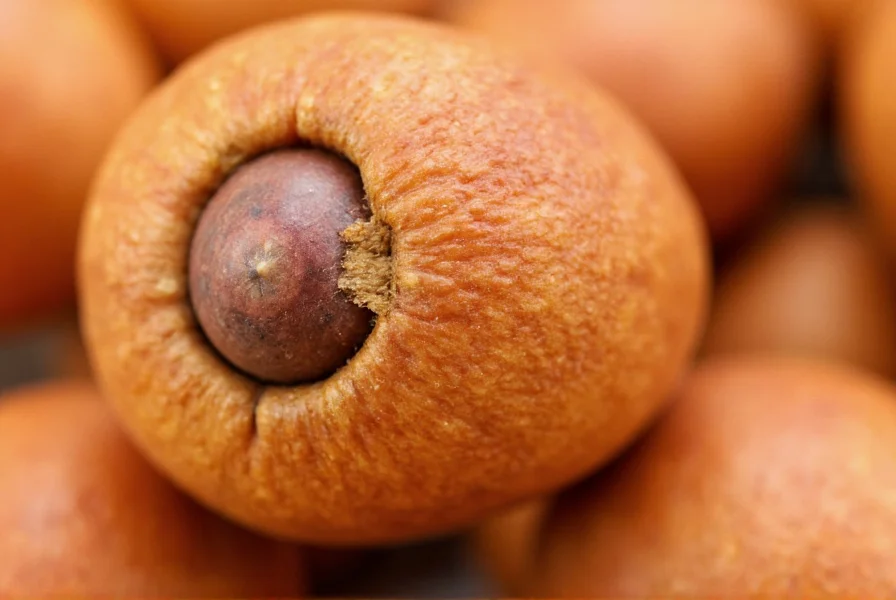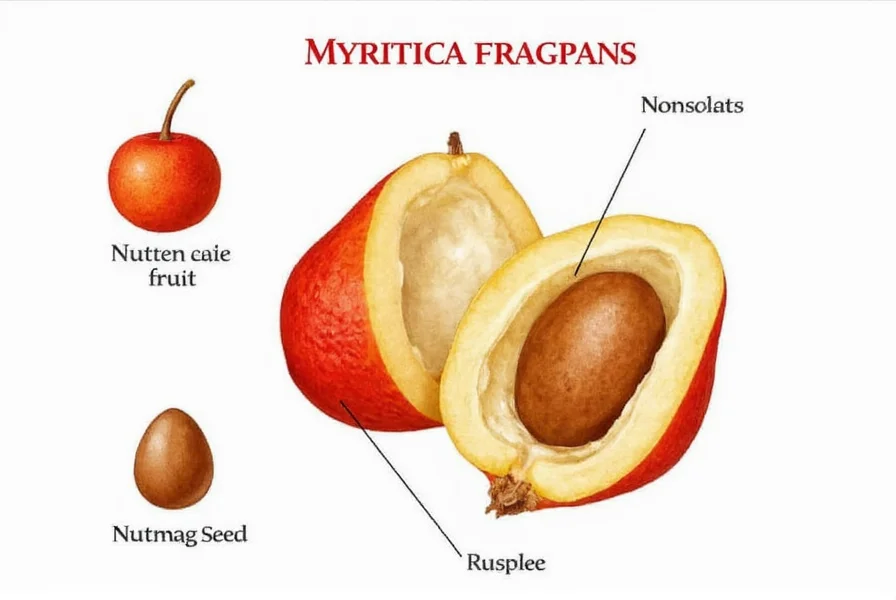Nutmeg's name causes understandable confusion, especially for those managing food allergies. Despite containing the word "nut," this popular spice has no botanical relationship to almonds, walnuts, or other tree nuts. Let's explore the facts behind this common kitchen staple and clarify why it's safe for nearly all consumers, including those with nut sensitivities.
What Exactly Is Nutmeg?
Nutmeg is the seed of Myristica fragrans, an evergreen tree native to the Banda Islands in Indonesia. When the fruit ripens, it splits open to reveal a crimson aril surrounding a hard, brown seed—the nutmeg. The aril is dried and sold separately as mace, while the seed becomes the nutmeg spice we use in cooking.

This tropical tree belongs to the Myristicaceae family, which shares no relation to the botanical families that produce tree nuts like walnuts (Juglandaceae) or almonds (Rosaceae). The "nut" in nutmeg refers to its physical appearance as a hard seed, not its botanical classification.
Understanding Nut Allergies and Nutmeg
For individuals with tree nut allergies, this distinction is crucial. Major allergy organizations including the American College of Allergy, Asthma, and Immunology confirm that nutmeg poses no risk to people with nut allergies because:
- Nutmeg isn't a nut but a seed from an unrelated plant family
- No cross-reactivity exists between nutmeg proteins and tree nut proteins
- Clinical studies show no allergic reactions in nut-allergic patients consuming nutmeg
| Allergen Type | Related to Nutmeg? | Scientific Explanation |
|---|---|---|
| Tree Nut Allergies | No | Different plant families with no shared protein structures |
| Peanut Allergies | No | Peanuts are legumes; nutmeg is an unrelated seed |
| Seed Allergies | Rarely | Isolated cases of seed allergy, not specifically to nutmeg |
Why the Confusing Name?
The term "nutmeg" dates back to Middle English notemuge, derived from the Old French nois musquée ("musky nut"). Early European traders named it for its nut-like appearance and musky aroma. This historical naming convention has caused persistent confusion that continues today.
Food manufacturers sometimes compound this confusion by including "nut" warnings on nutmeg products due to:
- Cross-contamination concerns in facilities processing multiple spices
- Overly cautious labeling practices
- Misunderstanding of nutmeg's botanical origin
However, the spice itself contains no nut proteins and presents no inherent risk to those with nut allergies.
Nutmeg and Mace: Two Spices, One Source
Many people don't realize that nutmeg and mace come from the same fruit. When the Myristica fragrans fruit ripens:
- The outer fruit splits to reveal the seed surrounded by a lacy red covering (the aril)
- The aril is removed and dried to become mace
- The seed is dried to become nutmeg

Both spices share similar flavor compounds but have distinct culinary applications. Mace offers a more delicate, citrusy flavor, while nutmeg provides a warmer, more intense taste.
Practical Guidance for Consumers
When purchasing nutmeg, consider these recommendations:
- Choose whole nutmeg when possible and grate it fresh for maximum flavor and purity
- Check labels carefully if you have severe allergies, though the risk comes from potential cross-contamination, not the spice itself
- Store properly in an airtight container away from light to preserve flavor compounds
- Understand serving sizes—nutmeg is potent, with typical recipes using 1/8 to 1/4 teaspoon
While nutmeg is generally safe, remember that excessive consumption (several teaspoons or more) can cause temporary neurological effects due to myristicin, a compound also found in smaller amounts in parsley and carrots. Normal culinary use presents no concerns.
Addressing Common Misconceptions
Several myths persist about nutmeg and nuts. Let's clarify:
- Myth: "Nutmeg contains nuts" → Fact: It's a seed from an unrelated plant
- Myth: "People with nut allergies must avoid nutmeg" → Fact: No scientific basis for this restriction
- Myth: "Nutmeg is a type of seed allergy" → Fact: True seed allergies are rare and not specific to nutmeg
Food allergy support organizations consistently list nutmeg as safe for those with tree nut allergies. The confusion stems entirely from the name, not biological reality.











 浙公网安备
33010002000092号
浙公网安备
33010002000092号 浙B2-20120091-4
浙B2-20120091-4